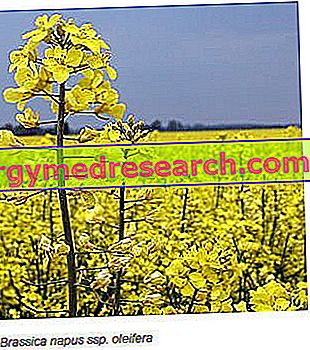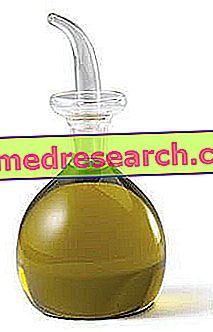Rapeseed or "rapa oleifera" - scientific name Brassica napus var. oleifera - is a plant belonging to the brassicaceae / cruciferous family which, from the botanical point of view, seems to be "in the middle" between the cabbage and the turnips genus.

Rapeseed oil in history
Rape (and its oil) is a turnip known since ancient times; the Romans ignored its existence, while the Gauls (in central Europe) already made extensive use of it.
Some historical finds place the first cultivations of oil rape in the north of France (in the XIII-XIV century); in the Middle Ages, rape oil was already the subject of exchanges and sales by the "corporation of oil producers" and by that of the "apothecary tradesmen".
Like many other types of oil (for example poppy seed oil), before the eighteenth century also the rape oil suffered great discrimination on the part of the scientific community; only in 1774 with the publication and relative scientific denial of the French abbot Rozier, many of these "banned" oils were restored on the continental market.
From 800 onwards, the rape was cultivated above all in the east-European area where, for religious reasons (Orthodox church), during Lent, milk and butter were strictly prohibited for the benefit of rape oil.
Uses of rape and rape oil
Since the eighteenth century, rape was considered, in addition to being a food, an emollient and resolving oil of great efficacy (Lémery - Pharmacopée Universelle); in the following century Roques and Cazin confirmed these properties by attributing to rape oil also the peculiar laxative function.
In the 1900s, Fournier reiterated its therapeutic utility both as an emollient and in the resolution of intestinal constipations through enteroclisms, adding a hypothetical preventive function against hepatic and renal colics. Moreover, it seems that the popular traditions (of which, however, the real reliability is not known) still pass on today to drink a glass of rapeseed oil as a remedy for the bite of a viper.
Rape can also ONLY use SEEDS; these, if taken in powder form, are highly diuretic and sudorific (5g in a cup of linden twice a day), while mixed with honey (same dose) can provide a certain emollient effect against cough and bronchitis.
For external use, using pads, the rapeseed oil is still used as a pro-cicatrizant in the treatment of sores, while more generically it is useful (mixed with aromatics) to solve the friction of massages and manipulations against pain.
Food use and nutritional aspects of rapeseed oil
There is not much information on rape oil since it is an "obsolete" food and consumed only in small territorial realities for artisanal production (on the contrary, it is of greater interest for industrial soap production). In the kitchen, rapeseed oil lends itself to the preparation of dishes that need a good seal (for the greater binding and emulsifying capacity than other oils) and is also very conservable compared to those equally rich in polyunsaturated fatty acids (PUFA); NB . although it is rich in omega-3, some claim that the rapeseed oil is very suitable for frying, thanks to its fat and viscous consistency.
In any case, what is certain is that rapeseed oil is a veritable mine of PUFA 18: 3 and the relative concentrations are almost comparable to those of linseed oil.
Bibliography:
- Encyclopedia of Health Plants - G. Debuigne - Gremese Editore - pag. 196



